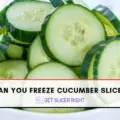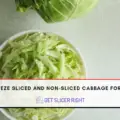Direct Answer:
Carrots can be sliced in various ways, including rounds (circles), diagonals (ovals), julienne (thin, matchstick-like strips), batonnet (thicker, stick-like cuts), and diced (small, cube-like pieces).
Carrots, a versatile root vegetable, can be sliced in many ways to suit different recipes and culinary needs. The cutting method can significantly influence the texture and cooking time of the carrots, as well as the overall presentation of the dish. Some common types of carrot cuts include rounds, which are circular slices; diagonals, which are oval-shaped slices cut at an angle; julienne, which are thin, matchstick-like strips; batonnet, which are thicker strips resembling small sticks; and dice, which are small, cube-like pieces. The chosen slicing method can add variety and interest to salads, stir-fries, soups, and other dishes.
Different Cuts Of Carrots
Slicing carrots differently can provide varying textures and aesthetics to your dishes. Here are some common cuts:
Thick Rounds:
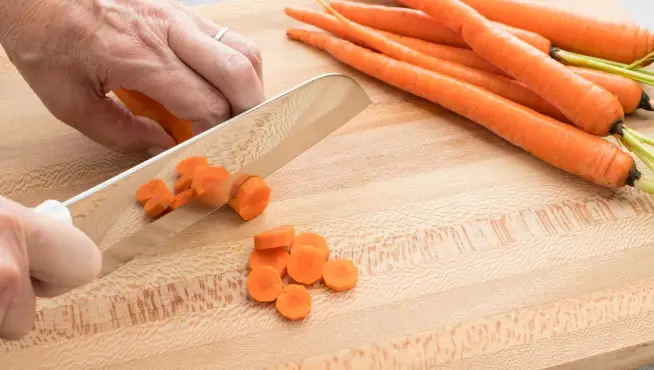
For thick rounds, you chop the carrot into circles with a thickness of around 5mm. These substantial pieces hold their shape well, making them excellent for soups and stews.
Thin Rounds:
These are finer circles with a thickness of around 2mm. Perfect for quick-cooking dishes like stir-fries or use in garnishes due to their delicate size.
Half Moons:
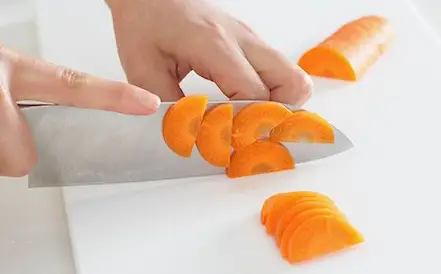
You first slice the carrot in half lengthwise to achieve this cut, then chop it into semi-circular pieces. This versatile shape adds visual appeal to salads and sautéed dishes.
Quarter Moons:
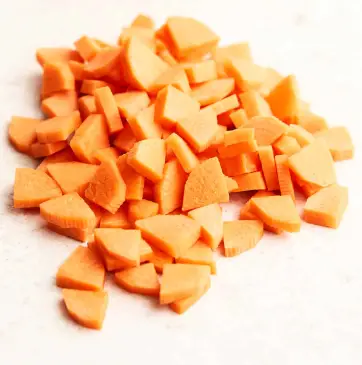
Quarter moons are made by slicing the carrot half lengthwise, then slicing each half lengthwise again before chopping into small arcs. They offer more surface area for cooking and add a different texture to dishes.
Diagonal Circles:
By slicing the carrot at a 45-degree angle, you create diagonal circles. This method provides more surface area for cooking and presents a slightly different texture and aesthetic.
Diagonal Half Moons:
Diagonal half-moons are achieved by first cutting the carrot in half, then slicing each half at a 45-degree angle. These offer an appealing shape that works well in salads or as a garnish.
Large Matchsticks:
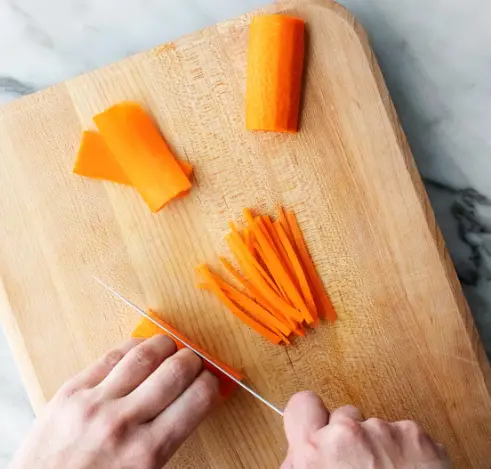
Also known as batonnet, large matchsticks are created by slicing the carrot lengthwise, then chopping it into smaller pieces. These sticks are perfect for dipping or adding a satisfying crunch to salads.
Stumpy Matchsticks:
Like large matchsticks but cut into shorter 2cm lengths, stumpy matchsticks are great in coleslaws, stir-fries, and stews.
Diced:
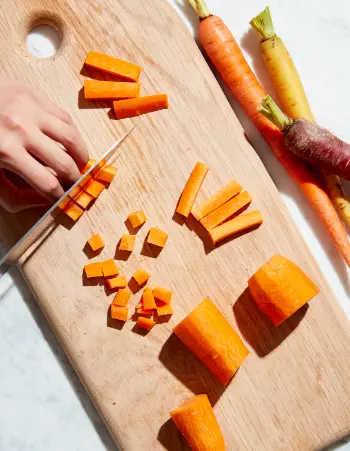
Dicing involves slicing the carrot into long lengths, then chopping these lengths into cubes. This cut is commonly used in soups, stews, and dishes where a uniform size is important for even cooking.
Cross Cut:
In this interesting cut, you cut the carrot in half lengthwise, then slice diagonally, alternating the direction of your knife with each cut. This results in varied but uniform pieces that add a pleasing texture and visual interest to your dishes.
Skinny Matchsticks/Julienne:
To create skinny matchsticks or julienne cut, you cut the carrot diagonally into slices, then thinly slice these pieces. This delicate cut is great for garnishes, stir-fries, or salads.
How To Prepare Julienne Carrots?
Step 1: Wash and Peel: Start by thoroughly washing your carrots under running water. Use a vegetable peeler to remove the outer layer.
Step 2: Top and Tail: Cut off the top and bottom (the “tail”) of the carrot. This gives you a flat base to work with and removes the inedible parts.
Step 3: Cut into Lengths: For more manageable pieces, cut your carrot into 2-3 inch lengths.
Step 4: Slice Lengthwise: Carefully slice each piece of carrot lengthwise into thin, flat slices, about 1/8 inch thick. Try to make these slices as even as possible.
Step 5: Stack and Slice: Stack these flat slices and then cut them lengthwise again into thin strips, maintaining that 1/8 inch thickness.
Step 6: Store Properly: If not using immediately, store your julienne carrots in the refrigerator in a container of water to keep them crisp.
How To Julienne Carrots?
Step 1: Peel the Carrots: Begin by peeling your carrots using a vegetable peeler to ensure a smooth, clean surface.
Step 2: Cut into Lengths: Once peeled, chop your carrots into 2-3 inch segments. This makes the following steps more manageable.
Step 3: Create Flat Surfaces: To stabilize your carrot pieces for even slicing, shave off one side to create a flat surface. Repeat this with the remaining sides until you have uniform, rectangular pieces.
Step 4: Cut Planks: Carefully cut these rectangular pieces lengthwise into thin planks about 1/16 to 1/8 inch thick. Try to keep the thickness of these slices consistent for uniform julienne sticks.
Step 5: Slice into Strips: Stack a few of these thin planks at a time and slice lengthwise again into 1/16- to 1/8-inch-thick strips, aiming to keep the width the same as the thickness of the planks.
How To Cut Carrots Into Flowers?
Here’s a simple, step-by-step guide to cutting carrots into beautiful flower shapes:
Step 1: Wash and Peel: Start off by washing your carrot under running water to remove any dirt or residue. Then, using a vegetable peeler, remove the outer layer.
Step 2: Halve the Carrot: Next, position the carrot horizontally on a cutting board and carefully cut it in half lengthwise.
Step 3: Trim the Ends: Slice off both ends of each carrot half to create a clean, uniform piece to work with.
Step 4: Create V-Shaped Grooves: Carefully cut a V-shaped groove along the length of the carrot half. You do this by making a 45-degree cut on one side, then another 45-degree cut on the opposite side. Be careful not to make the grooves too deep to keep the ‘petals’ of the flower from appearing too square. Start small – you can always deepen the groove if necessary.
Step 5: Add More Grooves: Repeat the process to cut four more evenly-spaced grooves along the length of the carrot half.
Step 6: Flower Petals: These grooves will serve as the petals of your carrot flowers. Five grooves will yield a five-petaled flower, which is aesthetically pleasing since many flowers have five petals. However, for smaller carrots, you might only manage four grooves, which will yield a four-petaled flower – and that’s fine too!
Step 7: Slice into Flowers: Finally, place the grooved carrot horizontally on your cutting board and slice into thin pieces. The cuts will reveal beautiful, flower-like shapes that can add a delightful touch to your dishes.
Tips For Cutting Carrots
Here are some helpful tips to make cutting carrots safer and easier:
- Use a Sharp Knife: Ensure that your knife is sharp before you begin. A sharp knife not only makes the cutting process smoother but it’s also safer, as it reduces the chances of the knife slipping off the vegetable and causing an accident.
- Adapt to the Recipe: Different recipes may call for different sizes and shapes of carrot pieces. Feel free to dice or julienne the carrots thicker or thinner based on your preference and the recipe’s requirement.
- Secure Your Hold: Carrots can be slippery and can roll due to their cylindrical shape. To get a better grip, hold the thicker end of the carrot while cutting. This stabilizes the vegetable and prevents it from moving around too much.
- Use a Stable Cutting Board: Always cut on a sturdy, flat cutting board. This not only ensures a steady base for cutting but also helps to avoid any cutting mishaps.
- Handle Large Carrots with Care: Large carrots can be a bit more challenging to handle. In such cases, it may be easier to cut them into two or three separate segments before proceeding with the specific cutting technique you need for your recipe.
How To Store Cut Carrots?
Storing your sliced carrots properly ensures their freshness and longevity. Here’s how:
- Mason Jars: Large batonnet carrots can be stored in mason jars filled with filtered water. Secure the lids and store them in the refrigerator for up to a week, changing the water daily.
- Blanching: Blanch large dice or batonnet cuts for longer storage, immerse them in boiling water for a minute or two, then transfer immediately to ice water. They can last for up to two weeks in the fridge.
- Damp Towels: All cuts of carrot can be wrapped in lightly damp paper towels, placed in an airtight container or plastic bag, and stored in the fridge for five to seven days.
FAQs
What are the best recipes for roasted carrots?
Roasted carrots can be flavored with various seasonings like honey and cinnamon, garlic and rosemary, or balsamic and thyme.
Why do baby carrots take longer to cook than large carrots?
Despite their small size, baby carrots are often denser than their mature counterparts, leading to longer cooking times.
What are thin slices of vegetables called?
Thin slices of vegetables, like carrots, are typically called julienne.
How long will carrots last in the fridge?
Whole carrots can last for about 3-4 weeks in the fridge, while cut carrots can last for about 1-2 weeks if stored properly.
What is the smallest cut called?
The smallest common cut is a “brunoise,” which results in tiny 1/8-inch cubes.
What size is a chiffonade cut?
A chiffonade cut results in thin strips or ribbons. This technique is often used for soft, flat leaves such as basil, spinach, or lettuce, but it can also be applied to thin vegetables like leeks.
The width of a chiffonade cut is usually around 1 mm or 1/16 of an inch but can vary depending on the recipe or personal preference. The length can be several inches, depending on the size of the leaf being cut.
Conclusion
The method you choose to slice carrots can have a significant impact on their texture, cooking time, and aesthetic appeal in your dish. Whether you choose rounds for simple snacking, diagonals for an interesting visual touch, julienne for quick cooking and salads, batonnet for hearty stews, or dice for finely chopped mixes, each cut has its unique uses in the kitchen. Mastering these various cuts can greatly enhance your culinary skills and the presentation of your dishes.
Key Points:
- Thick round, thin round, half-moons, quarter moons, diagonal circles, diagonal half-moons, large matchsticks, stumpy matchsticks, diced, cross-cut, and julienne are different types of carrot cuts.
- Properly storing carrots using mason jars, blanching, or damp towels can extend their freshness and usability.
- Picking perfect carrots involves checking the vegetables’ color, firmness, and shape.

John Hebdon is a food enthusiast, passionate chef, and author of various articles and blog posts related to food and cooking. With a deep love for all things culinary, John’s blog serves as a platform to share his extensive kitchen experiences with a broader audience.
In addition to his culinary expertise, John has a flair for writing and a natural ability to share his passion for food with others. His articles and blog posts are informative, engaging, and packed with practical tips for readers of all skill levels.
As a food enthusiast and writer, John is always on the lookout for new and exciting culinary experiences. Whether it’s trying out a new restaurant, experimenting with a new recipe, or simply sharing a favorite dish with friends and family, John is always eager to explore and share the world of food with others.

